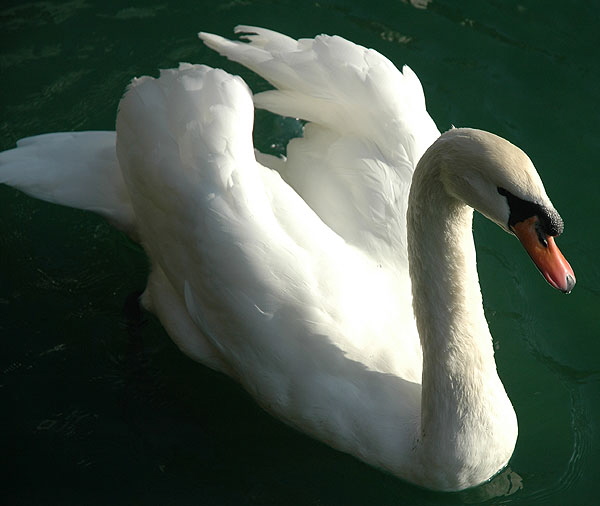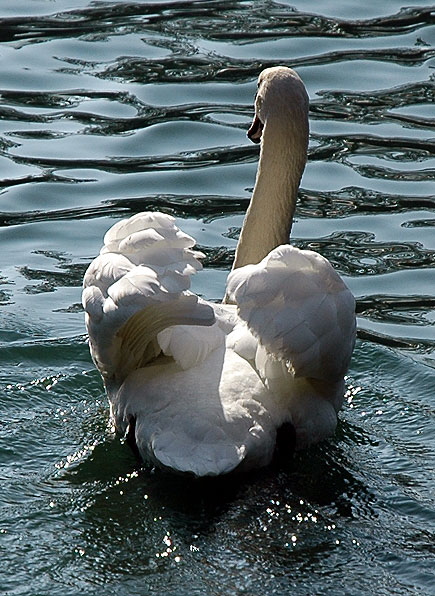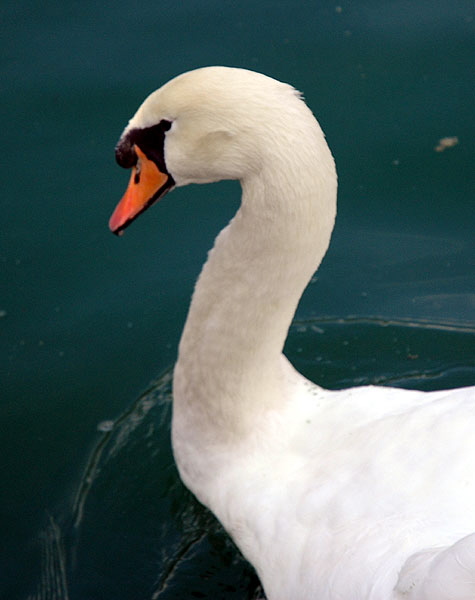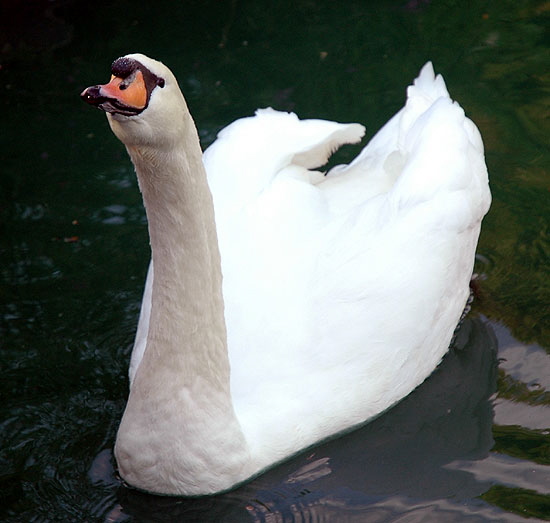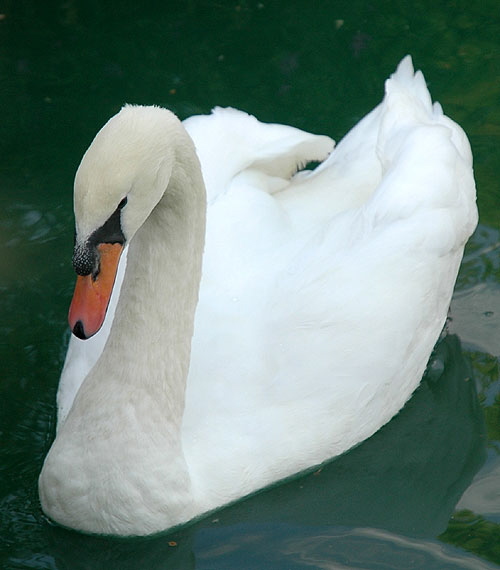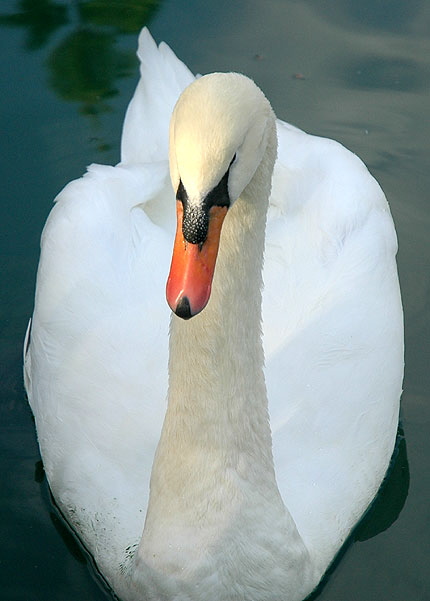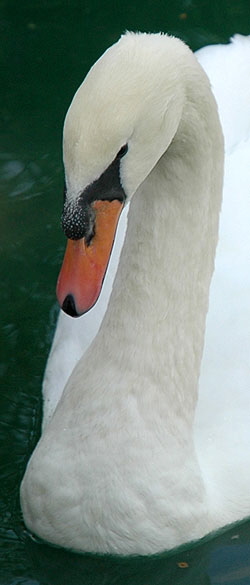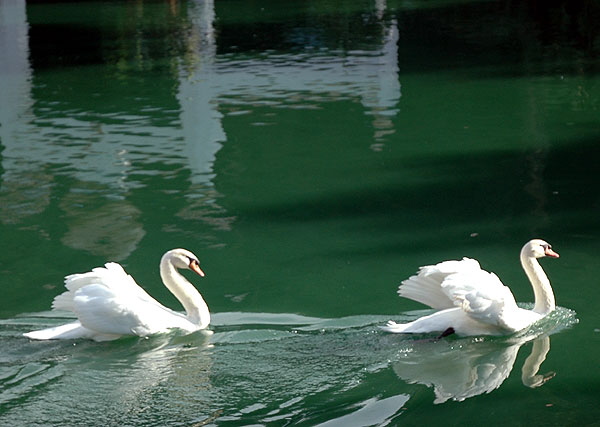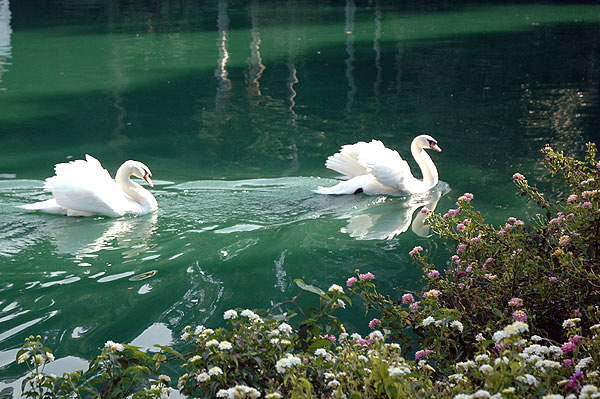|
Cygnus olor (mute swan)
Kingdom: Animalia
Phylum: Chordata
Subphylum: Vertebrata
Class: Aves
Order: Anseriformes
Family: Anatidae
Subfamily: Anserinae
Genus: Cygnus
Species: Cygnus olor
Mute swans breed in the British Isles, north central Europe and north central Asia. They winter as far south as North Africa, the Near East, and to northwest India and Korea. They have been successfully introduced in North America, where they are a widespread species and permanent residents in many areas.
Mute swans are the most common swans in the wild, in parks or on country estates in their native range. In winter, they are more common on marine waters. They live in well-sheltered bays, open marshes, lakes, and ponds.
Mute swans are large birds, measuring 144 to 158 cm. The wingspan is 2 to 2.5 meters. The two sexes are alike in appearance, except that males are generally larger than females. The plumage is white. They are best distinguished from North American swans by the knob at the base of the upper bill, and the color of the bill itself, which is orange, with the tip and base colored black. The head and neck may sometimes be stained brown from water and mud containing iron.
Adults are not paired for life, contrary to the stereotype of the 'pining swan' who has lost its mate. In fact, some have been observed to have as many as four mates, or even 'divorce' one mate in favor of another. However, established pairs are more successful breeders than non-established pairs and mute swans do form monogamous pairs for at least a season.
Mute swans rarely nest in colonies. Nest sites are selected and breeding begins in March or early April. These swans either build a new nest or use a previously constructed mound, such as a muskrat house. The nest is large, made of aquatic vegetation, and lined with feathers and down. It is built well above the normal water level in swampy places near a pond or lake. It is possible for clutches of 5 to 12 to occur, but 5 to 7 is most common. The eggs are pale gray to pale blue-green. Incubation lasts 36 to 38 days. The chicks are brownish gray (gradually turning white within the next 12 months) and only remain in the nest for one day. The male may often take the first-hatched cygnet to the water while the female continues to incubate the remaining eggs. They are able to fly in about 60 days. Chicks can ride on the backs of their parents or under their wings. By the following breeding season the parents drive the young away. The cygnets then join flocks of other non-breeding swans, and during this time molt their feathers, becoming flightless for a short period of time. In the next two years, the cygnets begin to bond with a mate and begin to look for suitable breeding territory. Swans do not begin to breed until about their third year.
|
